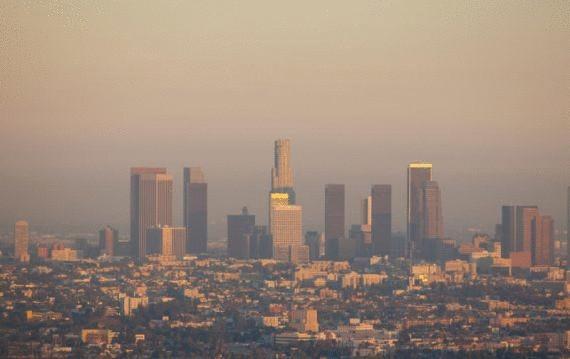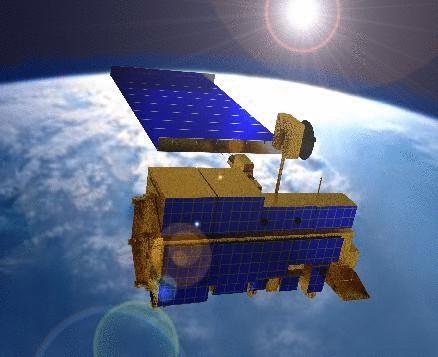Satellites that measure the level of smog over major cities of the world
 Bashny.Net
Bashny.Net
Dense layers of global smog caused by transport, industry and other factors are mostly over cities in the world. But to obtain an accurate measurement of air pollution – no easy task. The observation "from the earth" does not always provide the accuracy of the data, to a large extent this is affected by the local positioning monitoring stations in some cities the stations are located in the center, some on the outskirts.
Pinhas Alpert (Alpert Pinhas), Professor, Department of Geophysics and planetary Sciences tel Aviv University changed the usual and inaccurate, but such an important process. To track the gas he used sensors on three satellites of the NASA MODIS-Terra, MODIS-Aqua, and MISR. This is the first attempt to standardize the process of monitoring air pollution in the world that will help scientists better understand the impact of pollution caused by man. Let's hope that someday the government will monitor air pollution in cities.

Professor Alpert together with his team, gathered information from satellites for 8 years. They watched the levels of air pollution over 189 major cities. Those cities with a population of over 2 million and the so-called megacities, with a population of over 5 million people, including new York, Tokyo and Mumbai (formerly, Bombay). The researchers used data obtained from three satellites monitoring the atmospheric aerosol optical depth.
Professor Alpert compares the use of three satellites with the traditional Jewish principle of the bench of three judges. "In the Jewish tradition, individual judges do not decide anything. There should be at least three. You need the opinion of the majority," he says. "By combining data from three imperfect sensors, their flaws, mostly balanced. In cases where three sensor display different information, more research is needed".
According to the study, China, India, Central Africa, Nigeria and the middle East currently lead in terms of contamination with the secondary hobby of concentration of gas in air of 34% between 2002 and 2010. Europe, North East and Centre North America as a whole show the greatest decrease in the concentration of gas. Among the cleanest cities were Houston, with a 31% decline over the entire period, in Curitiba, Brazil with 26% decrease and Stockholm, Sweden with a 23% reduction. Some American cities were on the list with high levels of air pollution, including Portland with a 53% and Seattle with a 32 percent increase on average. But Professor Alpert believes these numbers reflect the multiple wildfires that have occurred in the region during the period under review. In the future he hopes to develop a method to separate the causes of pollution on the natural and human-caused.

Previously used a standardized process of analysis of smog is often difficult due to unreliable data from monitoring stations, the reluctance of politicians or government to show the exact figures of gas and even a complete lack of control over this important process in major regions of the world, says the Professor. When it comes to international agreement aimed at reducing smog, this new way of measurements can help to force countries to take responsibility for their promises by tracking the real numbers. Cities that have successfully reduced the level of contamination, deserve applause for their efforts and worthy to act as positive role models.
Source: /users/104
Pinhas Alpert (Alpert Pinhas), Professor, Department of Geophysics and planetary Sciences tel Aviv University changed the usual and inaccurate, but such an important process. To track the gas he used sensors on three satellites of the NASA MODIS-Terra, MODIS-Aqua, and MISR. This is the first attempt to standardize the process of monitoring air pollution in the world that will help scientists better understand the impact of pollution caused by man. Let's hope that someday the government will monitor air pollution in cities.

Professor Alpert together with his team, gathered information from satellites for 8 years. They watched the levels of air pollution over 189 major cities. Those cities with a population of over 2 million and the so-called megacities, with a population of over 5 million people, including new York, Tokyo and Mumbai (formerly, Bombay). The researchers used data obtained from three satellites monitoring the atmospheric aerosol optical depth.
Professor Alpert compares the use of three satellites with the traditional Jewish principle of the bench of three judges. "In the Jewish tradition, individual judges do not decide anything. There should be at least three. You need the opinion of the majority," he says. "By combining data from three imperfect sensors, their flaws, mostly balanced. In cases where three sensor display different information, more research is needed".
According to the study, China, India, Central Africa, Nigeria and the middle East currently lead in terms of contamination with the secondary hobby of concentration of gas in air of 34% between 2002 and 2010. Europe, North East and Centre North America as a whole show the greatest decrease in the concentration of gas. Among the cleanest cities were Houston, with a 31% decline over the entire period, in Curitiba, Brazil with 26% decrease and Stockholm, Sweden with a 23% reduction. Some American cities were on the list with high levels of air pollution, including Portland with a 53% and Seattle with a 32 percent increase on average. But Professor Alpert believes these numbers reflect the multiple wildfires that have occurred in the region during the period under review. In the future he hopes to develop a method to separate the causes of pollution on the natural and human-caused.

Previously used a standardized process of analysis of smog is often difficult due to unreliable data from monitoring stations, the reluctance of politicians or government to show the exact figures of gas and even a complete lack of control over this important process in major regions of the world, says the Professor. When it comes to international agreement aimed at reducing smog, this new way of measurements can help to force countries to take responsibility for their promises by tracking the real numbers. Cities that have successfully reduced the level of contamination, deserve applause for their efforts and worthy to act as positive role models.
Source: /users/104
Tags
ecology and peace
sensors
air pollution
satellite
smog
pollution
the pollution concentration of sagatavoti
See also
The most beautiful cities in the world, built according to plan
10 movies that have not come out!
As the struggle with waste in different cities around the world
Hazardous areas of cities in the world
Rating of the most expensive cities in the world in 2009 (20 photos)
The world's largest solar power plant
Cities in the style of "Then and Now"
Moscow entered the top three of the least liveable cities in the world
The dirtiest cities in the world (10 photos)

















